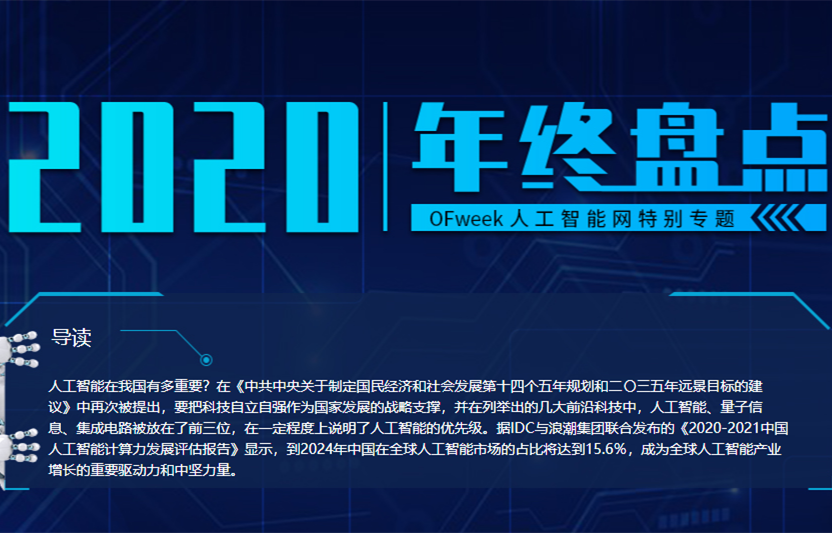Bean的定义与控制、纯Java运行与@Bean
全局配置初始化与销毁方法
IoC容器还提供了全局配置初始化与销毁方法的配置:
package x.y;public class A { public void init(){ // 初始化资源 } public void destroy(){ // 销毁资源 }}
<beans default-init-method="init" default-destroy-method="destroy"> <bean id="a" class="x.y.A"/> <!-- bean configuration --></beans>
通过在<beans>标签上使用default-init-method和default-destroy-method 属性参数,可以为容器中所有的Bean统一指定初始化和销毁的生命周期方法。
如果在<beans>上设定2个默认的生命周期方法,同时在<bean>上也指定了init-method或destroy-method,回调方法会以<bean>上的配置为准。这样就保证全局配置与单独配置可以共存。
使用初始化或销毁2个生命周期方法注意的要点:
初始化和销毁都提供了3种手段:XML配置、注解、以及实现接口。系统的各个部分会交由不同的团队开发,不遵循统一的规范,建议使用满足JSR规范的注解——@PostConstruct、@PreDestroy。如果是统一的团队,准训一致的规范,建议使用<beans>的属性统一名称使用全局配置。
如果Bean设计到代理模式时(例如使用了AOP),那么生命周期方法被调用时,有可能代理类还没有被创建出来。因为生命周期方法是实体类完成对应工作之后就会被调用,而与代理类无关。
3.0新增容器启动方法
在3.0之前的Spring核心框架中,我们启动一个Spring容器必须使用一个XML文件。而到了3.X之后的版本Spring为创建容器新增了一个入口类——AnnotationConfigApplicationContext。
AnnotationConfigApplicationContext和过去的ClassPathXmlApplicationContext、FileSystemXmlApplicationContext等方法不同的是他不用再指定任何XML配置文件,而是可以通过指定类向容器添加Bean。我们通过几个简单的例子来说明他的使用。
以下例子只用于说明问题,源码请到 gitee 自行 clone(http://t.cn/E6Wvo51),本节的代码在 chkui.springcore.example.javabase.simple 包中。
直接添加Bean
我们可以通过AnnotationConfigApplicationContext直接向容器添加指定的类作为Bean,先定义我们的class:
package chkui.springcore.example.javabase.simple.pureBean;
class LolBean { public String toString() { return "I AM LOL!"; }}
class WowBean { public String toString() { return "I AM WOW!"; }}
然后向容器添加这些Bean:
package chkui.springcore.example.javabase.simple;
public class WithoutAnnotation { public static void main(String[] args) { ApplicationContext ctx = new AnnotationConfigApplicationContext(WowBean.class, LolBean.class); System.out.println(ctx.getBean(WowBean.class)); System.out.println(ctx.getBean(LolBean.class)); }}
这样就启动了一个Spring的容器,并且容器中包含了WowBean和LolBean这两个类的单例。
替代<beans>标签
@Configuration在之前介绍Spring核心容器的文章中出现过一两次,配合各种注解的使用@Configuration可以替代<beans>配置中的所有功能。基本上AnnotationConfigApplicationContext和@Configuration组合使用就可以实现Spring容器纯Java启动。请看下面的例子。
我们在前面例子的基础上增加几个类:
package chkui.springcore.example.javabase.simple.bean;
public class DotaBean { public String toString() { return "I AM Dota!"; }}
@Componentpublic class PseBean {
@Override public String toString() { return "I AM PSE!"; }}
注意DotaBean上是没有@Component注解的。然后添加@Configuration配置:
package chkui.springcore.example.javabase.simple.bean;
@Configuration@ComponentScan("chkui.springcore.example.javabase.simple.bean")public class Config { @Bean public DotaBean dotaBean() { return new DotaBean(); }}
最后运行他们:
package chkui.springcore.example.javabase.simple;
public class WithScan { public static void main(String[] args) { ApplicationContext ctx = new AnnotationConfigApplicationContext(Config.class, WowBean.class, LolBean.class); System.out.println(ctx.getBean(Config.class)); System.out.println(ctx.getBean(PseBean.class)); System.out.println(ctx.getBean(WowBean.class)); System.out.println(ctx.getBean(LolBean.class)); System.out.println(ctx.getBean(DotaBean.class)); }}
@Component已经在《Stereotype组件与Bean扫描(http://t.cn/E6WhYYk)》这篇文章介绍过,@ComponentScan的作用等价于<context:component-scan/>标签,属性参数都是一一对应的,只不过前者是驼峰命名规则(camelCase)——@ComponentScan(basePackages="..."),后者是短横线命名规则(kebab-case)——<context:component-scan base-package="..."/>。实际上使用Annotation来替换XML配置中的内容,大部分都使用这种转换方式。
@Configuration和@Bean标签会在后续的内容中详细介绍。@Bean主要用于方法标记,表明这个方法返回一个要添加到容器中的Bean。
AnnotationConfigApplicationContext的其他使用方法
除了以上常规的使用方法,AnnotationConfigApplicationContext还有其他方式向容器添加Bean。
可以使用AnnotationConfigApplicationContext::register方法来添加配置和Bean:
public static void main(String[] args) { AnnotationConfigApplicationContext ctx = new AnnotationConfigApplicationContext(); //动态添加配置文件 ctx.register(Config1.class, Config2.class); //动态添加Bean ctx.register(Bean1.class); //刷新 ctx.refresh();}
注意最后的refresh方法,这个方法来源于ConfigurableApplicationContext接口,然后是在AbstractApplicationContext中实现的。他的过程相当于销毁之前已经创建的资源,然后再重新创建了一个新的容器。这里的代码会执行以下几步:
new AnnotationConfigApplicationContext():创建一个新的容器,容器中没有自定义的Bean。
AnnotationConfigApplicationContext::register:向容器添加BeanDefinition(http://t.cn/E6WzQ7W),但是这些BeanDefinition并没有转化为容器中的Bean。
ConfigurableApplicationContext::refresh():纳入新添加的BeanDefinition重建容器。
还可以直接使用AnnotationConfigApplicationContext::scan方法扫描指定的路径:
public static void main(String[] args) { AnnotationConfigApplicationContext ctx = new AnnotationConfigApplicationContext(); ctx.scan("com.acme"); ctx.refresh();}
执行原理和上面介绍的一样。
需要注意的是:如果你的工程中需要使用AnnotationConfigApplicationContext::register、AnnotationConfigApplicationContext::scan等方法创建容器和其中Bean的依赖关系,所有的Bean都只能在register或scan中添加。如果你既在AnnotationConfigApplicationContext的构造方法中添加了Bean,又使用AnnotationConfigApplicationContext::refresh()方法会抛出一个重复执行refresh的异常。AnnotationConfigApplicationContext::refresh()方法全局也只能被调用一次。
@Bean注解
@Bean注解等价于配置文件中的<bean>标签,对应的参数也是将短横线命名切换为驼峰命名——<bean init-method="..."> => @Bean(initMethod="...")。@Bean注解只能使用在方法上,方法必须是在@Configuration标记的类或者其他Bean中,两者存在的差异会在后续的文章中介绍。下面通过一个例子来说明Bean的使用。
以下例子只用于说明问题,源码请到 gitee 自行 clone(http://t.cn/E6Wvo51),本节的代码在 chkui.springcore.example.javabase.beanAnnotation 包中。
定义两个要添加到容器中的Bean:
package chkui.springcore.example.javabase.beanAnnotation.bean;
class FinalFantasy { @Override public String toString() { return "Final Fantasy 1~15"; } public void init() { System.out.println("Final Fantasy init!"); } public void destroy() { System.out.println("Final Fantasy destroy!"); }}
class DragonQuest { public String toString() { return "Dragon Quest 1~11"; } @PostConstruct public void init() { System.out.println("Dragon Quest init!"); } @PreDestroy public void destroy() { System.out.println("Dragon Quest destroy!"); }}
定义一个功能接口及其实现类:
package chkui.springcore.example.javabase.beanAnnotation.bean;
interface Support { void setFinalFantasy(FinalFantasy ff); FinalFantasy getFinalFantasy();}class SupportImpl implements Support { private FinalFantasy ff; public void setFinalFantasy(FinalFantasy ff) { this.ff = ff; } public FinalFantasy getFinalFantasy() { return ff; }}
然后顶一个@Configuration类:
package chkui.springcore.example.javabase.beanAnnotation.bean;
public class BeanAnnotationConfig { @Bean public Support support(FinalFantasy ff) { Support support = new SupportImpl(); support.setFinalFantasy(ff); return support; } @Bean(initMethod="init", destroyMethod="destroy") @Description("Final Fantasy") public FinalFantasy finalFantasy() { return new FinalFantasy(); } @Bean(name= {"dragon-quest", "DragonQuest"}) public DragonQuest dragonQuest() { return new DragonQuest(); }}
最后运行他们:
public class BeanAnnotApp {
public static void main(String[] args) { ApplicationContext ctx = new AnnotationConfigApplicationContext(BeanAnnotationConfig.class); Support support = ctx.getBean(Support.class); System.out.println(support.getFinalFantasy()); System.out.println(ctx.getBean(DragonQuest.class)); }
}
在配置类BeanAnnotationConfig中,我们配置了3个Bean。这里的写在方法上的@Bean注解和写在配置文件中的<bean>注解一个效果:
@Bean中的initMethod和destroyMethod对应<bean>标签中的init-method和destroy-method属性。
@Bean中的name参数只有一个值时相当于id,有多个的时候相当于设置了多个别名
Support support(FinalFantasy ff):我们可以直接在方法中暴露参数来引入其他Bean,这就类似于配置中ref的功能。
如果不指定initMethod和destroyMethod,使用JSR-330的生命周期注解(@PostConstruct、@PreDestroy)同样有效

关于作者:陈葵,目前现任职某跨境安全支付公司技术总监,中山大学密码学与信息安全专业硕士。对金融级安全支付,高可用性云应用,分布式事物、DevOps有多年的经验。虽肩负团队管理的任务,但对Coding依然保持极大的兴趣,熟读Spring、React、Tensorflow等各类开源项目的核心代码。目前主导通过数据分析+AI提升风控模型能力的研究。
关于EAWorld:微服务,DevOps,数据治理,移动架构原创技术分享。关注EAWorld!

最新活动更多
-
3月27日立即报名>> 【工程师系列】汽车电子技术在线大会
-
4月1日立即下载>> 【村田汽车】汽车E/E架构革新中,新智能座舱挑战的解决方案
-
即日-4.22立即报名>> 【在线会议】汽车腐蚀及防护的多物理场仿真
-
4月23日立即报名>> 【在线会议】研华嵌入式核心优势,以Edge AI驱动机器视觉升级
-
4月25日立即报名>> 【线下论坛】新唐科技2025新品发布会
-
5月15日立即下载>> 【白皮书】精确和高效地表征3000V/20A功率器件应用指南











 分享
分享















发表评论
请输入评论内容...
请输入评论/评论长度6~500个字
暂无评论
暂无评论